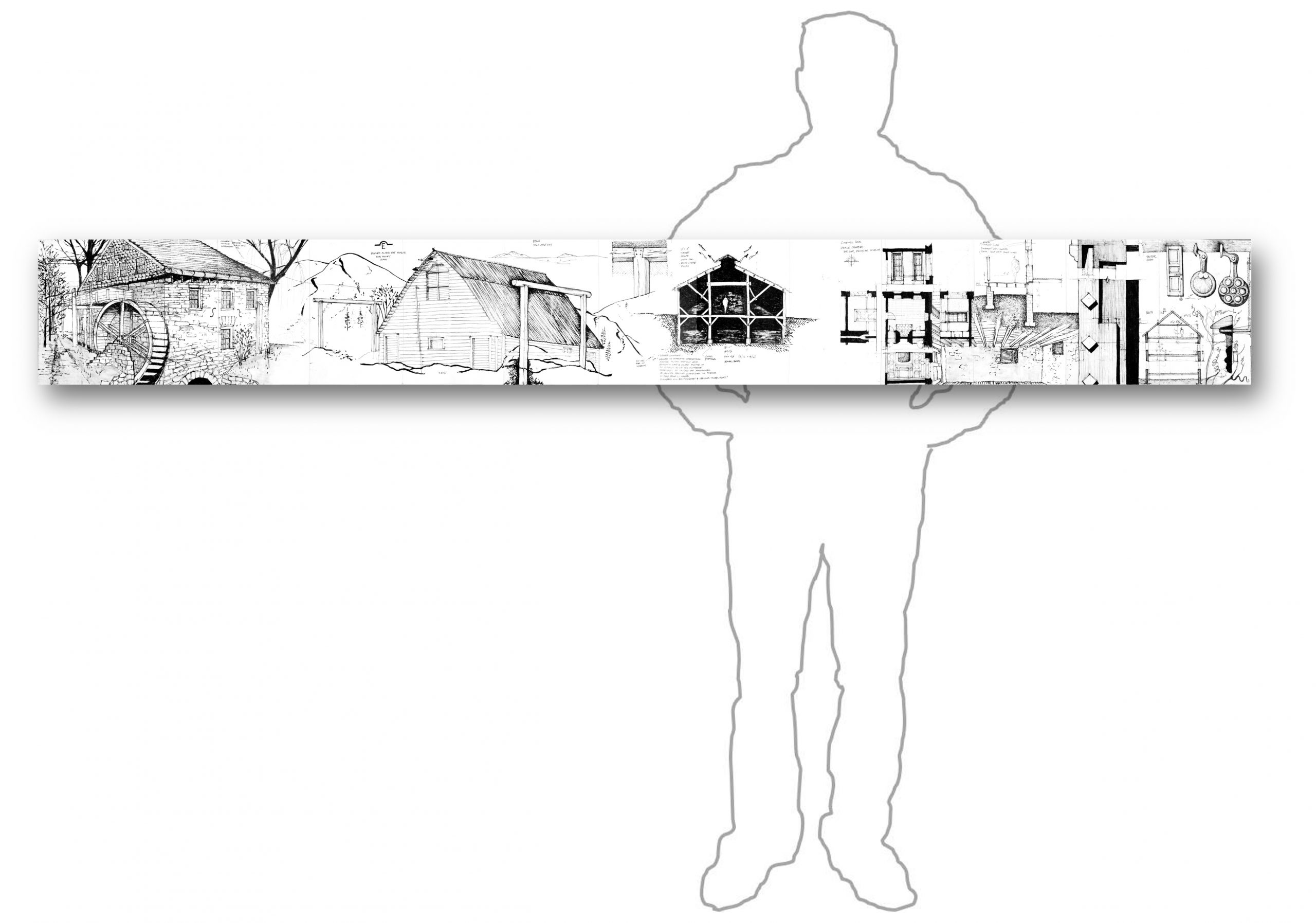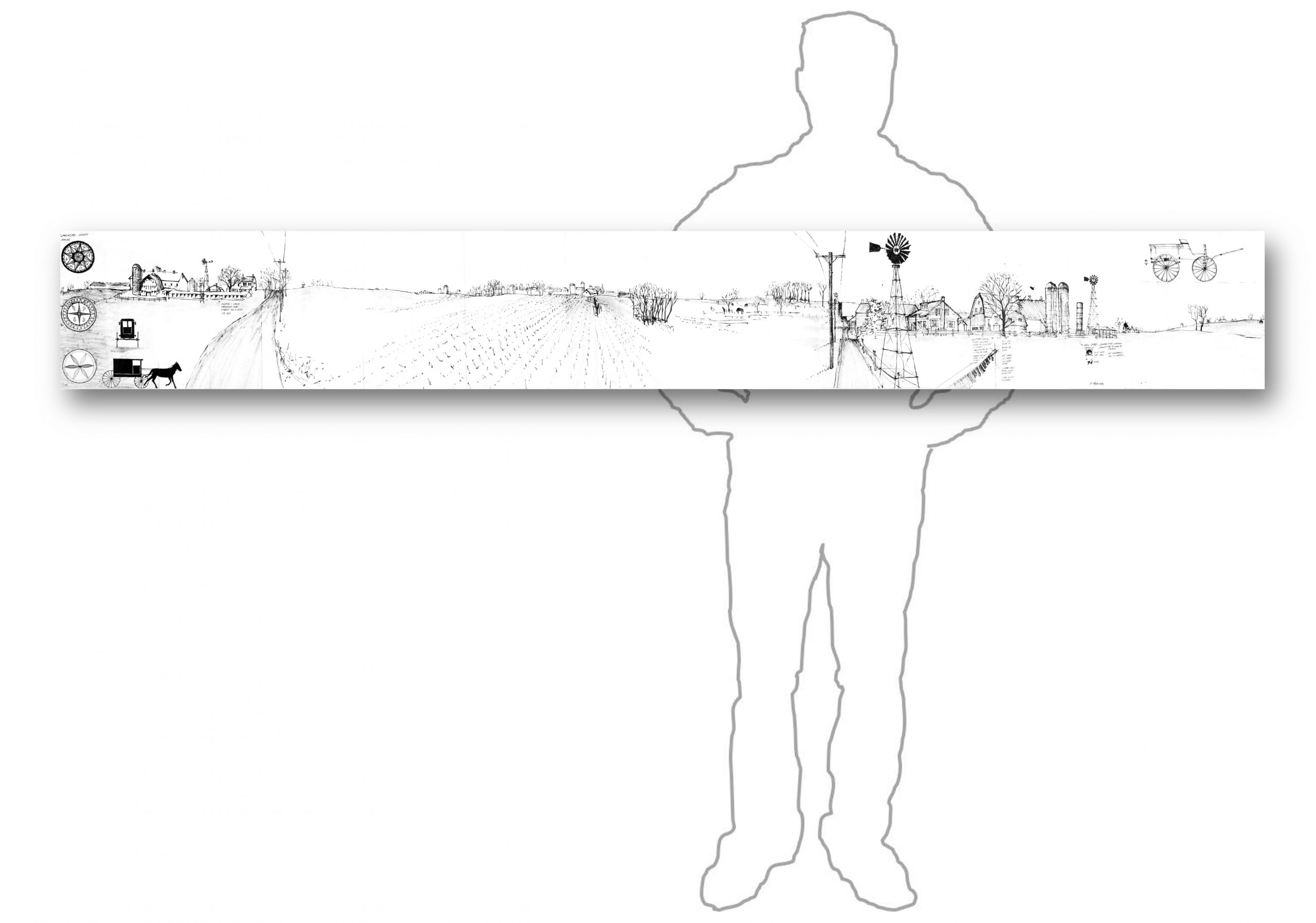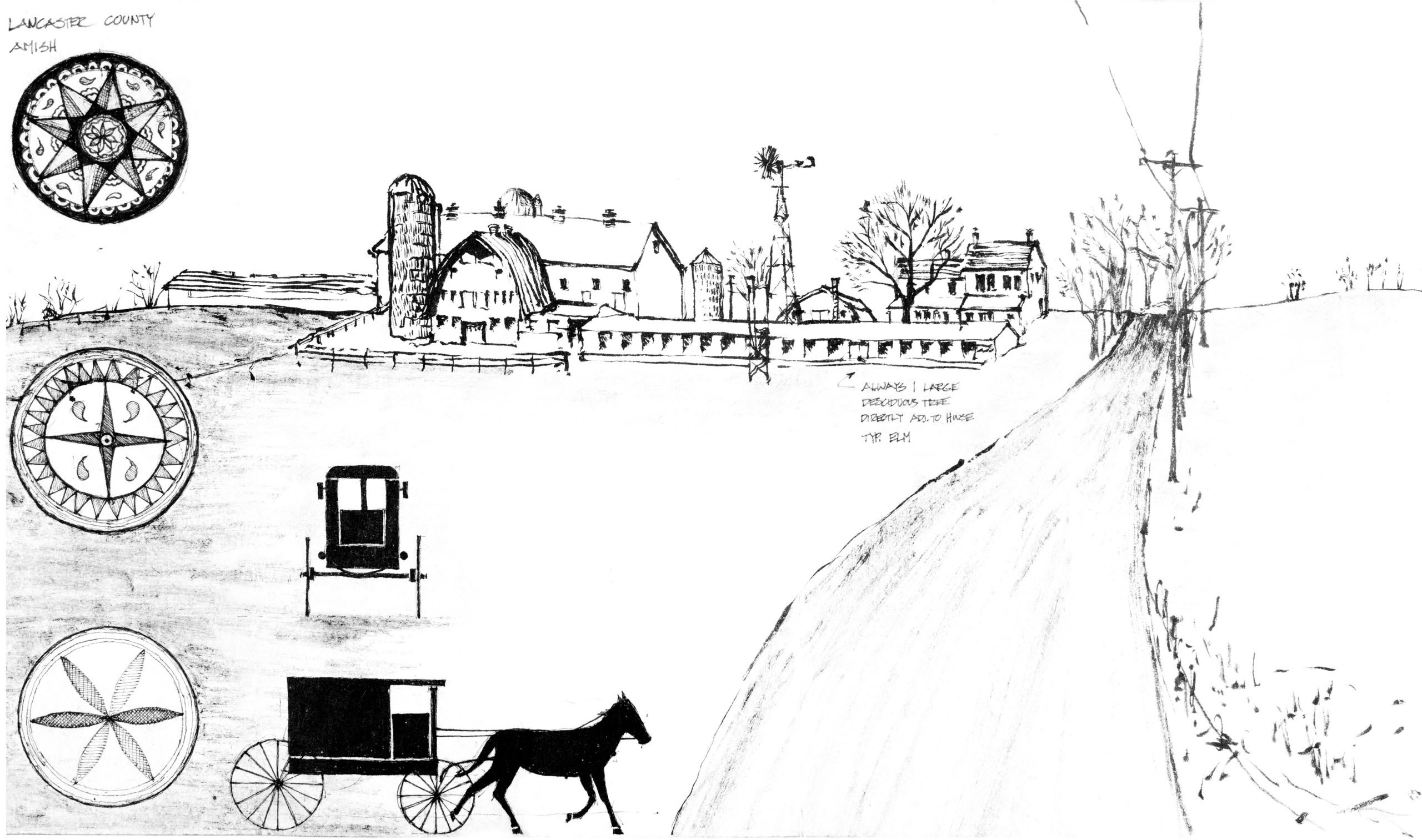7.5.USA-2-detail-a grain mill Highlights Relevant to Sustainable Design:
Preventive reinforcement is more cost effective than reconstruction.
Mills have come to symbolize a time in American history that seems simpler. Mills are often painted alongside a picturesque creek partially dilapidated with some mossy stones in the foreground. This particular mill from the 1820s is appealing because of the large S braces on both sides. The S is made of forged iron and serves to support the walls from expanding outward by holding the end of a long iron rod that is connected to the other side. Often star-shaped braces serve the same function to reinforce walls and double as ornamentation.
You can sometimes see the stars in brick structures, such as the last building in a row of town houses. This idea of preventive reinforcement is not unlike preventive medicine. Overall, prevention is key to sustainability in that it helps reduce the burden of replacement and reconstruction, which adds debris to landfills and transportation pollution.
The mill wheel itself is perhaps appealing for the same reason as the stars or S curve in that its aesthetic appeal is a by-product of its function. The running water from the stream turns the mill’s large exterior wooden water wheel, which in turn moves the smaller interior stone-grinding wheel, which in most cases grinds grain into flower to make bread. The mill wheel has the added advantage of sound and motion to heighten the senses. We largely leave hydropower to the major public works and utility companies, with large-scale projects like the Hoover Dam. However, new technology for tidal power shows some promise where localized power production can yield results in rivers and other areas where water is in motion.
7.4.USA-2-Horizontal-with-Figure – This drawing includes a grain mill, barn cupola, and shutter dogs.
The figure outline in this image is for scale to illustrate the size of the fold-out field drawing. The descriptions of certain key elements and insights are included with the accompanying drawings in this section.

Perspective across continents counts.
Various barns in Idaho beg the question, “Why are roof shapes so different within a region and across different regions?” Dairy cows simply have different needs from horses. A barn is never just a barn but a structure designed for its occupants. The simple post gateway reminds me of a gate to a Japanese shrine in sketchbook Japan 6: Detail (a). This instinct to provide a gate is apparently global. A threshold provides something to walk through to distinguish one side from another. The gate itself does not change the land around it, but our perception of being “in” versus “out” becomes meaningful. A house drawn with its walls folded out gives you a chance to look at the window “jamb” detail on a basement window and study the “shutter dogs” that hold a shutter against a wall. The jamb is the vertical section of the window that supports the frame. Old houses are often loaded with design innovations that come to life on close inspection.
Author and illustrator: Charlie Szoradi is an architect, inventor, and the CEO of Independence LED Lighting. He writes about many other topics related to grain mill design through his extensive travels around the world.
If you have found this posting online, it is an excerpt from Mr. Szoradi’s book Learn from Looking that served as the inspiring seed content for this drawing share resource. For additional drawings and insights on grain mill design and hydropower, we hope that you enjoy exploring LearnfromLooking.com. You can search via general terms such as sustainability as well as narrower terms such as grain mill design, hydropower, and wall reinforcement.
Grain mill historic properties are often open for tours, and they provide an excellent opportunity to show children the connection of form and function.



